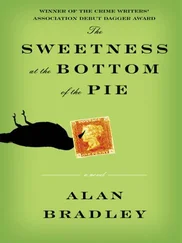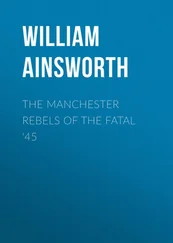253 mountains of eastern Turkey:Ahmet Faik Oner et al., “Avian Influenza A (H5N1) Infection in Eastern Turkey in 2006,” NEJM 355, no. 21 (Nov. 23, 2006): 2179-85.
254 Researchers in Indonesia:I. Nyoman Kandun et al., “Three Indonesian Clusters of H5N1 Virus Infection in 2005,” NEJM 355, no. 21 (Nov. 23, 2006): 2186-94.
254 doctors in Thailand:“H5N1 Virus Now Harder to Detect in Humans,” Nation (Thailand), Aug. 18, 2006; and Writing Committee of the World Health Organization Consultation on Human Influenza A/H5, “Avian Influenza A (H5N1) Virus Infection in Humans,” NEJM 353, no. 13 (Sept. 29, 2005): 1374-85.
254 WHO says they are not sensitive enough:WHO, “WHO Recommendations on the Use of Rapid Testing for Influenza Diagnosis”; and WHO, “Clinical Management of Human Infection with Avian Influenza A (H5N1) Virus,” updated Aug. 15, 2007.
255 “does not encourage immediate openness”:Angus Nicoll, “Human H5N1 Infections: So Many Cases—Why So Little Knowledge?” Eurosurveillance 11, nos. 4-6 (Apr.-June 2006): 74-75.
255 fewer than a dozen victims:One of the few autopsies was performed on Captan Boonmanut, the Thai boy whose admission to Siriraj Hospital in Bangkok helped alert Dr. Prasert Thongcharoen to the spreading virus. See Mongkol Uip rasertkul et al., “Influenza A H5N1 Replication Sites in Humans,” Emerging Infectious Diseases 11, no. 7 (July 2005): 1036-41.
256 Rini Dina:Her case is discussed in: I. Nyoman Kandun et al., “Three Indonesian Clusters of H5N1 Virus Infection in 2005,” NEJM 355, no. 21 (Nov. 23, 2006): 2186-94.
258 on the afternoon of Tuesday, June 14:The account of this meeting is based primarily on an internal WHO account, “Notes of Avian Influenza Meeting, Tuesday, June 14, 2005.”
260 when Troedsson reported back:Personal notes of call, June 14, 2005.
260 Stohr and his colleagues in Geneva:Personal notes of discussion, June 14, 2005.
260 sent an e-mail:E-mail from Yan Li, June 13, 2005.
261 Kinsmen Place Lodge:The details in this account are drawn from extensive press coverage of the episode in August and September 2003, including multiple articles written by Helen Branswell of Canadian Press; Pamela Fayerman, Kim Pemberton, and Nicholas Read of the Vancouver Sun ; Mark Hume of the Toronto Globe and Mail ; and Lawrence K. Altman of the New York Times . See also Wayne Kondro, “Canadian Officials Watch SARS-like Mystery Bug,” Lancet 362, no. 9385 (Aug. 30, 2003): 714.
262 without his permission:Nicholas Zamiska, “Avian Flu Puts WHO in a Bind,” Wall Street Journal Asia, Oct. 18, 2005.
263 Khai signaled his government’s good intentions:For Ellen Nakashima’s full interview with Khai, see “Transcript: Interview with Phan Van Khai,” washingtonpost.com, June 16, 2005.
264 “They should be from different backgrounds”:Personal notes of discussion.
264 say as little as necessary:Personal notes of call.
264 without actually lying to them:For WHO’s vaguely worded, four-paragraph press release about the mission, see “International Team of Avian Influenza Experts Visits Viet Nam,” June 24, 2005.
266 rogue bits of genetic material:Several members of the WHO mission, including Tashiro, told me that the Canadian primers were at fault. Plummer later told me that he did not dispute the findings that the tests conducted with the Canadian-supplied primers had yielded false positives. But he added, “Given that both our lab and the CDC have concluded that our primers are effective, we remain confident that they were not the cause of the false positives.”
266 French press agency reported:“Top Scientists Downgrade Risk of Imminent Bird Flu Pandemic,” Agence France Presse, June 29, 2005.
Chapter Ten: Let’s Go Save the World
269 more people had died:On the stream of Indonesian cases in late 2005 and early 2006, see Endang R. Sedyaningsih et al., “Epidemiology of Cases of H5N1 Virus Infection in Indonesia, July 2005-June 2006,” Journal of Infectious Diseases 196, no. 4 (Aug. 15, 2007): 522-27.
269 keeping her identity confidential:Though I continue to honor this request, the victim’s name was disclosed in Indonesian press reports.
273 humming with questions:On the key steps and objectives of an avian flu investigation, see “WHO Guidelines for Investigation of Human Cases of Avian Influenza A (H5N1),” WHO, Jan. 2007.
274 A study of Indonesia’s first 127 confirmed cases:I. Nyoman Kandun et al., “Factors Associated with Case Fatality of Human H5N1 Infections in Indonesia: A Case Series,” Lancet 372, no. 9640 (Aug. 30, 2008): 744-49.
277 deadliest outbreak of Marburg hemorrhagic fever:Accounts of the Angola outbreak can be found in John Donnelly, “Deadly Virus, Anger Take Hold in Angola,” Boston Globe, Apr. 12, 2005; Sharon LaFraniere and Denise Grady, “Stalking a Deadly Virus, Battling a Town’s Fears,” New York Times, Apr. 17, 2005; and M. A. J. McKenna, “CDC Team Sees Small Advances Against Disease,” Atlanta Journal-Constitution, May 25, 2005.
277 a flare-up in southern Sudan:A good account is David Brown, “U.N. Team Studies Sudan Outbreak,” Washington Post, Oct. 21, 1998.
278 the mountains of Afghanistan:For details, see WHO press release, “‘Influenza-like’ Acute Respiratory Infection Behind Deadly Afghan Outbreak,” Mar. 2, 1999.
280 suddenly erupted in Azerbaijan:Some of the details in this account come from internal WHO situation updates, field reports, and notes of conference calls in March 2006. The outbreak is described in “Human Avian Influenza in Azerbaijan, February-March 2006,” Weekly Epidemiological Record , no. 18, May 5, 2006, 183-88; A. Gilsdorf et al., “Two Clusters of Human Infection with Influenza A/H5N1 Virus in the Republic of Azerbaijan, February-March 2006,” Eurosurveillance 11, nos. 4-6, Apr.-June 2006, 122-26; and Caroline Brown, “First H5N1 Outbreak in Humans Associated with Dead Wild Birds: Azerbaijan, February-April 2006,” paper presented at FAO/OIE International Scientific Conference on Avian Influenza and Wild Birds, Rome, May 30-31, 2006.
282 rumors and emerging reports:See Gina Samaan et al., “Rumor Surveillance and Avian Influenza H5N1,” Emerging Infectious Diseases 11, no. 3 (Mar. 2005): 463-66.
285 Five South Koreans:“Five More in S. Korea Infected by Bird Flu,” Agence France Presse, Sept. 15, 2006.
285 Hong Kong’s mass slaughter:C. B. Bridges et al., “Risk of Influenza A (H5N1) Infection Among Poultry Workers, Hong Kong, 1997-1998,” Journal of Infectious Diseases 185, no. 8 (Apr. 15, 2002): 1005-10. This article also reports that 10 percent of 1,525 poultry workers tested in Hong Kong were positive for H5N1 antibodies.
285 In one telling study:Sirenda Vong et al., “Low Frequency of Poultry-to-Human H5N1 Virus Transmission, Southern Cambodia, 2005,” Emerging Infectious Diseases 12, no. 10 (Oct. 2006): 1542-47. A pair of studies that looked at Nigerian poultry workers with widespread exposure to likely infected poultry and Chinese workers in live poultry markets at the time of a human infection possibly contracted in a market also showed minimal evidence of antibodies to H5N1. See J. R. Ortiz et al., “Lack of Evidence of Avian-to-Human Transmission of Avian Influenza A (H5N1) Virus Among Poultry Workers, Kano, Nigeria, 2006,” Journal of Infectious Diseases 196, no. 11 (Dec. 1, 2007), 1685-91; and Ming Wang et al., “Food Markets with Live Birds at Source of Avian Influenza,” Emerging Infectious Diseases 12, no. 11 (Nov. 2006): 1773-75.
Читать дальше











